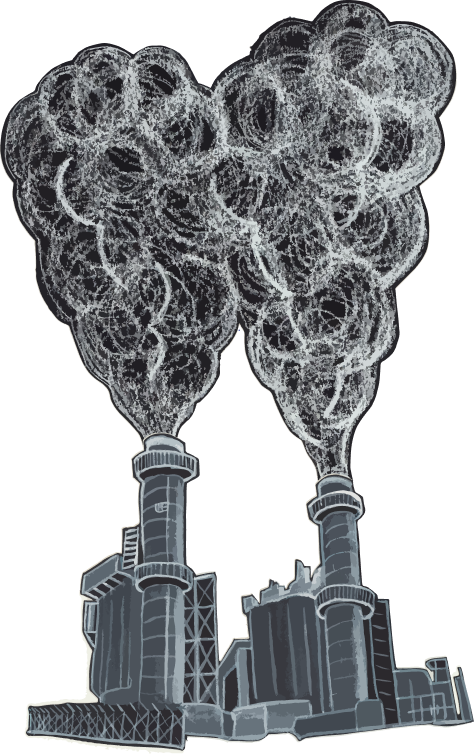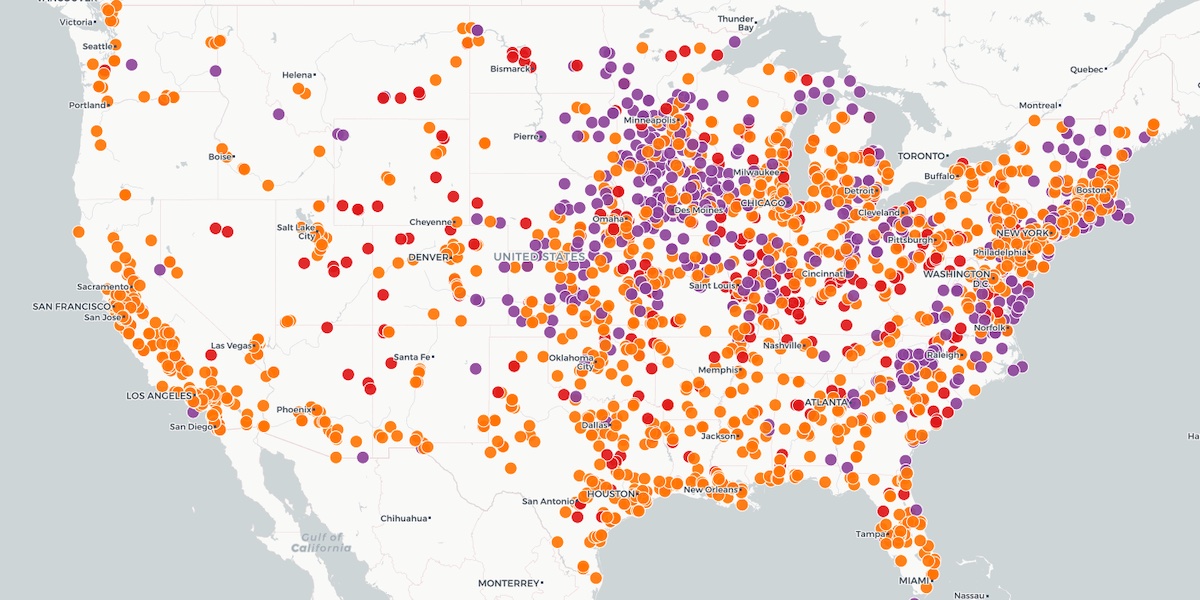Nebraska
Back to mapTo get to zero by 2050, Nebraska must cut emissions by 3.7% a year
Emissions in Nebraska
Million metric tons of carbon dioxide (CO2) [?] equivalent (MTCO2e [?]) emissions
Note: Grey area indicates missing data due to processing delays.
Source: WRI, Mar 2021
This is how we're going to do it
- Boilers and furnaces with heat pumps [?]
- Gas stoves with electric induction stoves [?]
- No-till farming to keep CO2 in the soil
- Capturing methane leaks from landfills
- Capturing CO2 to make emissions-free concrete
- Burning green hydrogen to make emissions-free steel
- Plugging methane leaks from gas pipelines
Decarbonize Our Buildings
5% of Nebraska's climate pollution comes from buildings.
We burn fossil fuels to heat our air, water, and food.
To cut this pollution...
Let's electrify our heat!
We'll replace...
...in all of Nebraska's 1.2 million buildings.
In fact, 35% of appliances in buildings in Nebraska are already fossil fuel free!
That means we only need to electrify the remaining 774,000 dirty buildings in Nebraska. That's around 29,000 per year.
Source: Microsoft, Mar 2021; NREL, Dec 2021Electrifying all buildings cuts 5% of the pollution.
Decarbonize Our Transport
15% of Nebraska's pollution comes from cars, trucks, trains, and planes.
But mostly from cars.
To cut this pollution,
your next car must be electric.
Or consider going car-free with public transit, bikes/e-bikes, car share, or other alternatives!
There are 625,000 vehicles in Nebraska and 2,000 are already electric (0.3% of the total).
We need to electrify (or replace) the remaining 623,000 gas-powered vehicles. That's around 23,000 a year.
Source: DOT, Feb 2021Electrifying all transportation cuts 15% of the pollution.
Decarbonize Our Power
24% of Nebraska's pollution comes from burning coal, gas, and oil to make power.

To cut this pollution...
Put solar panels on your roof!
Then, we'll replace all fossil fuel power plants with solar and wind farms.

...and find good jobs for those workers.
Current Fossil Fuel Power Plants in Nebraska
10 coal plants
Nebraska City Station
Otoe County
1,390 MW
Gerald Gentleman Station
Lincoln County
1,363 MW
North Omaha Station
Douglas County
645 MW
Gerald Whelan Energy Center
Adams County
324 MW
Sheldon
Lancaster County
229 MW
Lon D Wright Power Plant
Dodge County
213 MW
Platte
Hall County
110 MW
Archer Daniels Midland Columbus
Platte County
71 MW
Archer Daniels Midland Lincoln
Lancaster County
8 MW
Western Sugar Coop - Scottsbluff
Scotts Bluff County
5 MW
30 gas plants
Cass County Station
Cass County
345 MW
Sarpy County Station
Sarpy County
338 MW
Rokeby
Lancaster County
266 MW
Beatrice
Gage County
247 MW
20 oil plants
Jones Street
Douglas County
130 MW
Hebron Peaking
Thayer County
57 MW
McCook Peaking
Red Willow County
57 MW
Wayne IC
Wayne County
22 MW
But wait!
It's not enough to replace our power plants with wind and solar farms.
To power our electric cars and buildings, we need two times the electricity we have today.
In all, we'll need to build 3,000 megawatt (MW) [?] of wind power and 3,000 MW of solar power.
Since the average wind turbine provides 2.75 MW of peak capacity, Nebraska would need to install about 963 turbines.
Since Nebraska already has 1,000 MW of wind and 9 MW of solar, that's 2,000 MW of wind power we need to build and 3,000 MW of solar power. That's around 57 MW of wind power and 97 MW of solar power a year.
Source: EIA, Apr 2022Decarbonizing all dirty power cuts 24% of the pollution.
And gives us zero-emissions power we need to eliminate pollution from buildings and cars!
Other Emissions
The last 55% of Nebraska's climate pollution comes from other sources...
This includes farming, landfills, industry, and leaks from gas pipelines.
There's no one solution to solve these problems, but there are lots of great ideas:
That doesn't mean there's no solution, it just means that clean electrification [?] doesn't help with these problems, and you could fill a whole book with covering all of them. We need to encourage our politicians to invest in researching new solutions and implementing existing solutions to these problems!
Ready to do your part?
Learn how to electrify your own machines and pass local policy to electrify the rest
Take Action